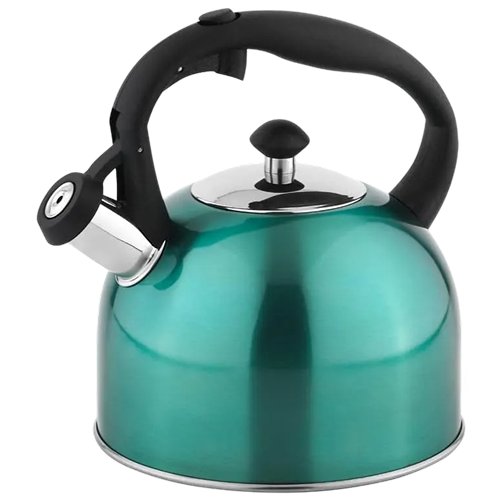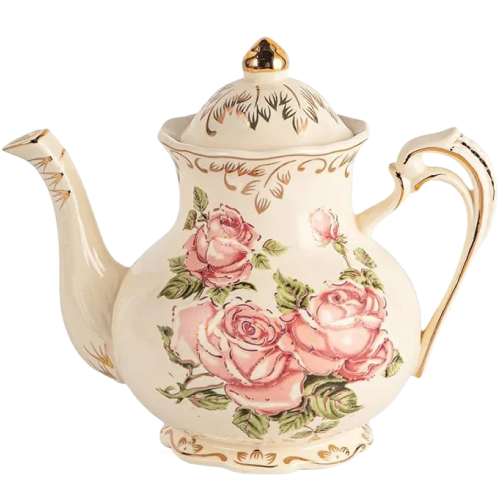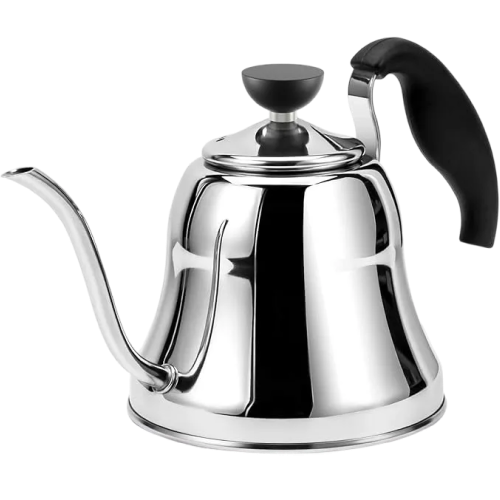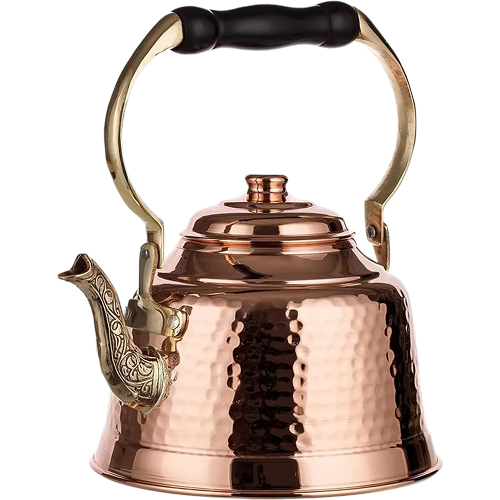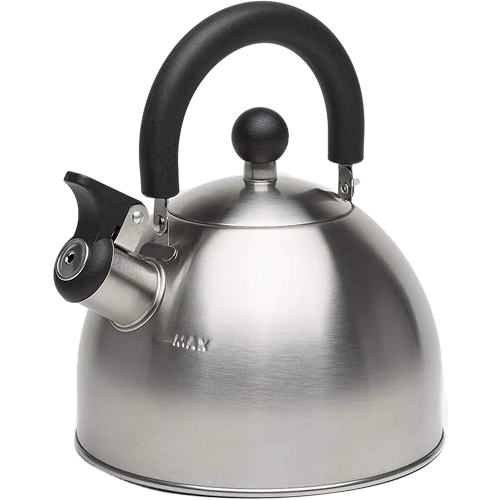Most people assume ceramic kettles are just stainless steel models with a decorative finish. They’re not even close. Ceramic kettles behave entirely differently – and fail in ways metal never will. I’ve watched too many people buy gorgeous handmade kettles for their looks, only to see cracks appear within months.
The physics behind this isn’t optional knowledge. Heating ceramic too fast or unevenly, and creates stress that metal would simply flex through. Ceramic doesn’t flex; it cracks, chips, or shatters. Everything from how the kettle was fired to which burner you use determines whether it lasts years or weeks.
This guide covers the technical specs and safety features that separate functional ceramic kettles from fragile decor pieces. I won’t rehash universal kettle advice you can get anywhere. Instead, you’ll find only what matters for a material this temperamental.
Understanding Ceramic and Porcelain Grades
Manufacturing temperature controls everything about durability.
High-fire porcelain is the only type of ceramic that I use. The structure becomes completely vitrified and non-porous, resisting thermal stress far better than mid- or low-fire ceramics.
Most manufacturers won’t advertise firing temperatures in their product listings. You’ll need to search for “high-fire porcelain” specifically, or contact the manufacturer to ask. If they can’t tell you their kiln temperature, walk away. Good ceramic makers know their firing specs, and they’ll tell you.
Stovetop Compatibility: The Ceramic Challenge
Why Ceramic Cracks on Modern Stovetops
Ceramic expands unevenly when exposed to concentrated heat. Gas burners distribute flame more evenly across the base, while glass-top and induction ranges create localized hot zones that ceramic can’t handle. That uneven heating creates stress points where cracks start.
Unfortunately, ceramic expands at different rates across the base, and eventually, something gives. Usually, that’s your $80 handmade piece.
Universal vs. Limited Compatibility
Some “universal” ceramic kettles include reinforced or metal-infused bases that distribute heat evenly and tolerate different cooktop types. Gas-only models lack these features since gas doesn’t need them.
Never assume compatibility. I bought a stunning Japanese kettle; the seller guaranteed it was “stovetop safe.” After three uses on my glass-top range, the entire base had spiderweb cracks running through it. Now I check specs for my exact stovetop before buying anything.
Heat Resistance and Thermal Shock
Thermal shock kills more ceramic kettles than anything else. This is what happens when you expose ceramic to fast temperature swings. When one area of the kettle heats or cools faster than another, the material is forced to expand or contract unevenly. The rigid crystalline structure can’t flex, and microscopic cracks eventually grow into visible fractures.
Heat resistance ratings show maximum temperature tolerance, but they really tell you how well the material handles thermal stress. Look for heat resistance ratings above 500°F (260°C) – that’s the benchmark for high-fire porcelain. Anything below 400°F should be treated with caution, and anything below 300°F should not be used on a stovetop.
The takeaway: better ceramics are fired hotter and built with uniform grain structure, so they resist cracking far longer under repeated thermal stress.
Glaze Safety: Non-Negotiable Certifications
Your kettle’s glaze sits between drinking water and potentially toxic materials – it must be food safe. Older glazes often used lead and cadmium to achieve beautiful, durable finishes. The problem is, boiling water pulls these heavy metals right out of poorly formulated or incorrectly fired glazes.
I don’t care how beautiful it is, if a ceramic kettle lacks FDA or EU food safety certification, it doesn’t belong in your kitchen. Companies skip certification for specific reasons, and those reasons aren’t “we forgot.” True certification costs money, and reputable manufacturers pay for it.
Look for actual certification marks or documentation. Just seeing “lead-free” stamped on the box doesn’t mean anything without proper third-party testing. This is where I draw the line, no exceptions.
Construction Quality That Matters
How well your kettle is built matters more than how it looks.
Handle Attachment Methods
- Through-bolted handles. This is what you want. Metal bolts pass completely through the kettle body and secure with interior nuts. They stay tight even as the ceramic expands and contracts.
- Riveted handles. Acceptable, but rivets can loosen over time from repeated heating and cooling.
- Glued handles. Unsafe. I don’t care what miracle adhesive they claim to use. heat breaks down adhesives, and a detached handle during pouring means burns.
- Integrated handles. Structurally sound but conduct heat unless designed with insulation.
Base Design and Stability
- Thick flat bases (8mm+). Stability, warp resistance, and even heat distribution across the entire surface
- Medium bases (5-7mm). Works for careful use but develops uneven wear patterns faster
- Thin bases (under 5mm). Wobbles dangerously and will crack from thermal stress
Your base needs to make full, flat contact with the stovetop. Any rocking means uneven heat distribution. I check this with a straight edge before purchasing. Even a small millimeter gap causes uneven heating and stress along contact points.
Spout and Lid Engineering
Engineered spouts need specific lip angles and pour channels to prevent dripping. Ceramic makes this harder than metal since you can’t bend it into shape. The spout geometry has to be right from molding. Poor spouts drip down the kettle’s side, so you’re constantly cleaning up and risking burns from hot water on exterior surfaces.
Lids require tight fits with proper steam vents. Loose lids pop off during vigorous boiling, shooting steam and scalding water everywhere. I always look for a locking mechanism or at least a very snug fit. Steam vents prevent pressure buildup while keeping lids secure.
Performance Considerations
Capacity is less important than you’d think since heating speed limits you anyway. You’re looking at 1.0L to 2.5L for most ceramic kettles. More capacity means more thermal mass. That translates to slower heating and more stress on the material as it heats up. After testing various sizes, 1.5-1.7L handles most household needs without taking forever to boil.
Weight balance gets tricky with ceramic. The material’s already heavy, and filling it with water creates a top-heavy, awkward situation that tips easily. Better designs keep the center of gravity low with wider bases and smart weight distribution. Try lifting it fully before buying, if possible. If it feels unstable or hard to control, it’ll be worse when it’s full and hot.
Ceramic holds temperature longer than metal, which is great for keeping water hot, but dangerous if you grab the handle five minutes after boiling. Cool-touch or heat-resistant handles aren’t optional for me.
Warranty and Long-Term Durability
A warranty of three years or longer tells me the manufacturer trusts their kettle won’t crack under normal use. Ceramic develops issues months or years later as repeated thermal cycling takes its toll. One year is the bare minimum, and anything less means the company knows its product won’t last.
Common failures include base cracks from thermal shock, handle detachment, and glaze crazing – the fine spiderweb cracks that develop on the surface over time. Quality manufacturers cover all these problems. Read warranty terms closely, since some exclude “improper heating” damage, which can mean whatever they decide when you try to make a claim.
A properly made ceramic kettle can last 5-10 years if you treat it right. The high-fire porcelain ones I’ve used have outlasted stainless steel kettles. Mid-grade stoneware typically shows stress cracks around year three. In the end, material science determines this, not luck.
Which Ceramic Kettle Is Right for You?
Safety comes first. Only buy kettles with verified food-safe glaze certification and high-fire porcelain construction rated 500°F or higher. These two factors are not negotiable. Everything else depends on how and where you’ll use it.
Glass-top or induction ranges absolutely require universal stovetop compatibility with a reinforced base engineered to distribute heat evenly. A gas-only kettle might “work” for a while, but it’ll likely fail sooner. Gas users have more flexibility, but universal compatibility still provides better heat distribution and a longer lifespan.
For daily use, build quality beats looks. Through-bolted handles, thick flat bases, and well-designed spouts separate kettles that last a decade from ones cracking in six months. If you’re buying mainly for display or occasional use, you can ease up on these requirements somewhat, but never on glaze safety or material grade.
The right ceramic kettle matches engineering quality to your stovetop and usage habits. Pretty glazes and decorative finishes are nice, but they won’t save you when the kettle cracks – I learned the hard way. I’ve got a whole drawer of cracked “beautiful” kettles that I should’ve evaluated more carefully before buying.


